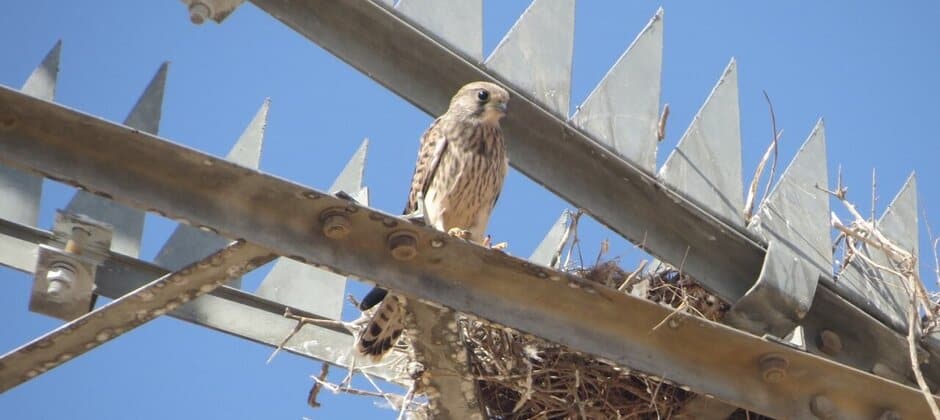Share this article
Wild Cam: Policing Persian power line safety with the help of kestrels
The best way to keep magpies from building unwieldy and dangerous nests on power lines in Iran may be to encourage kestrels to move in.
“We can use one species of bird that doesn’t tend to get electrocuted to manage one that does,” said TWS member James Dwyer, a Certified Wildlife Biologist at EDM International, Inc., a private electric engineering consulting company.
Birds nesting on power lines can create a number of problems. When birds are big enough—or their nests are—they can connect two lines, or two transformers, on electric poles and become electrocuted. When the conditions are right, some of these birds even burst into flames, catching vegetation on fire and causing wildfires.
Enlarge
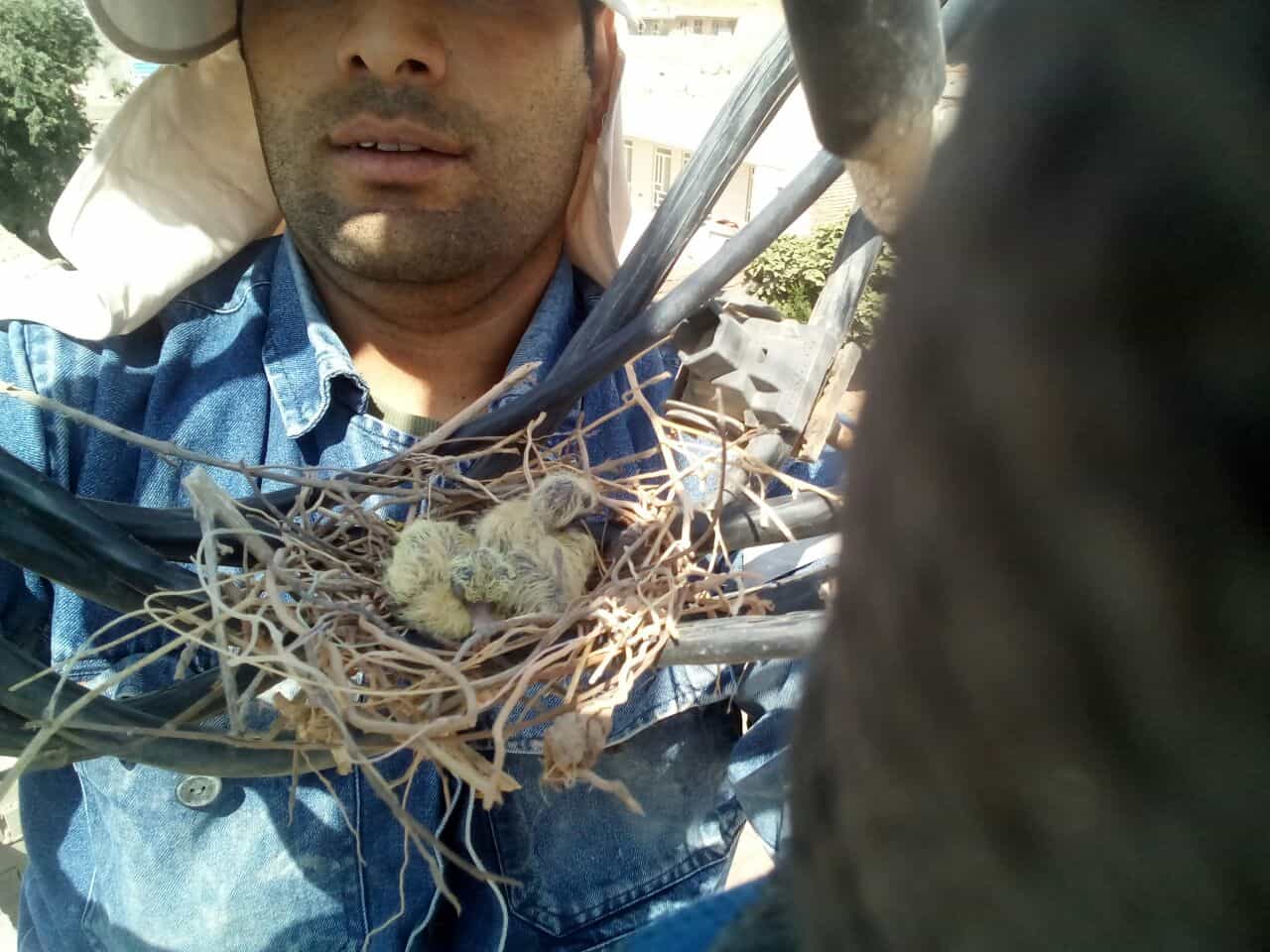
Credit: Iran's Birds and Power Lines Committee
In Iran, researchers wanted to learn more about the types of birds that often nested on power lines in an effort to improve wildlife safety and security for the electric grid. Since scientists hadn’t done systemic analysis of the types of birds nesting on lines, researchers turned to social media, where power line workers often posted photos of bird nests like the one above of laughing doves (Spilopelia senegalensis).
“We conservationists in the U.S., Iran and other parts of the globe are in the same boat,” said Mahmood Kolnegari, a scientist with Iran’s Birds and Power Lines Committee, which works to protect birds and power lines from the mutual damage they can cause each other. “Conflict between birds and power lines is a global obsession.”
For a study published recently in the Wildlife Society Bulletin, Kolnegari, Dwyer and their co-authors examined power line workers’ posts on social media including Instagram, Telegram and other mediums popular in Iran from January 2019 to December 2020. They identified as many bird species as they could by examining photos of the actual birds or viewing nests that were distinct enough for the researchers to determine the species that used them.
Enlarge
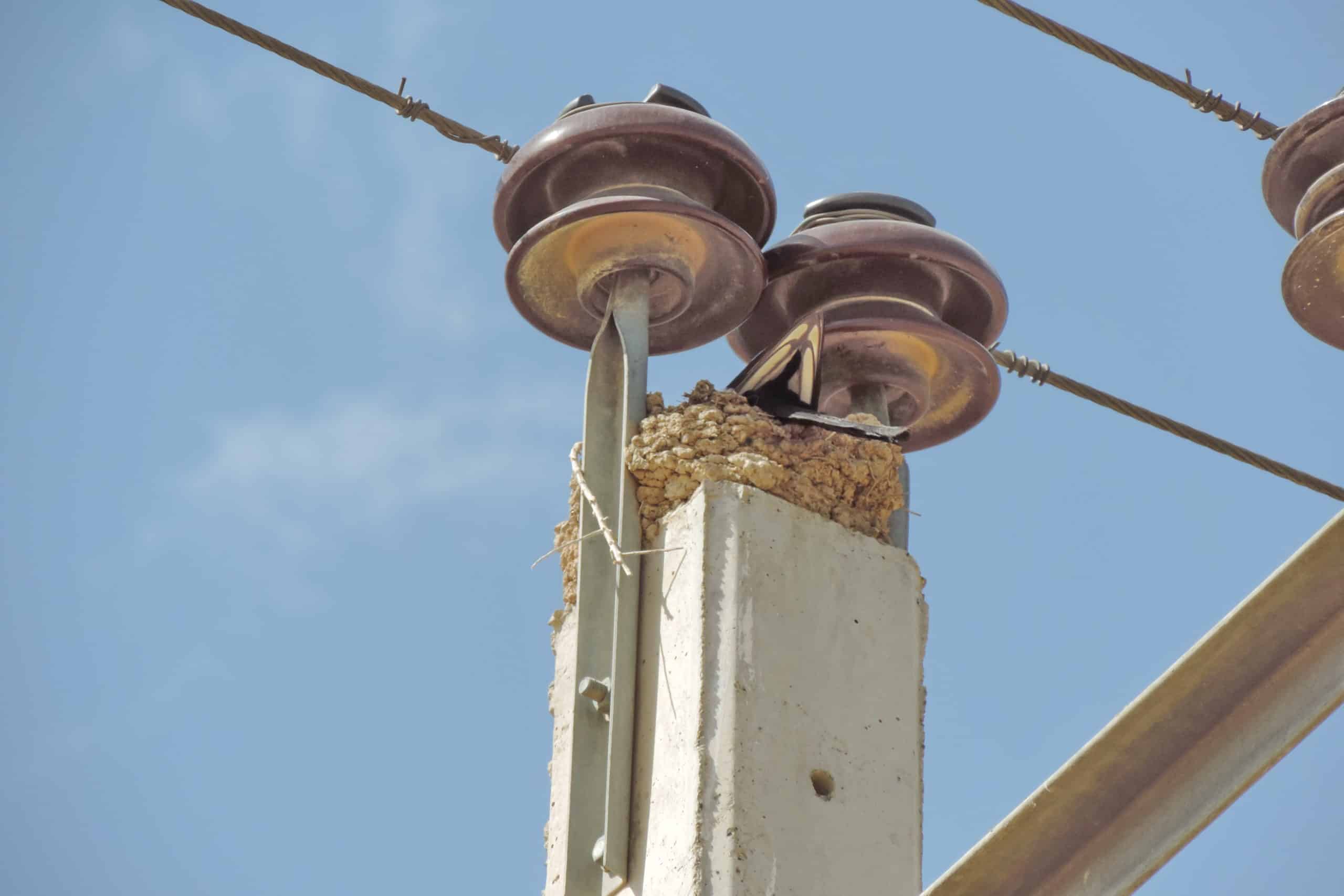
Credit: Iran's Birds and Power Lines Committee
Their analysis revealed that 14 bird species nested on electric poles, with the most common being Eurasian magpies (Pica pica), pictured above. These birds can be a problem because they build nests big enough to sometimes connect the power transformers, leading to electrocution and sometimes fires. These nests posed an especially large risk on local distribution lines, which are smaller than the larger transmission line poles.
Enlarge
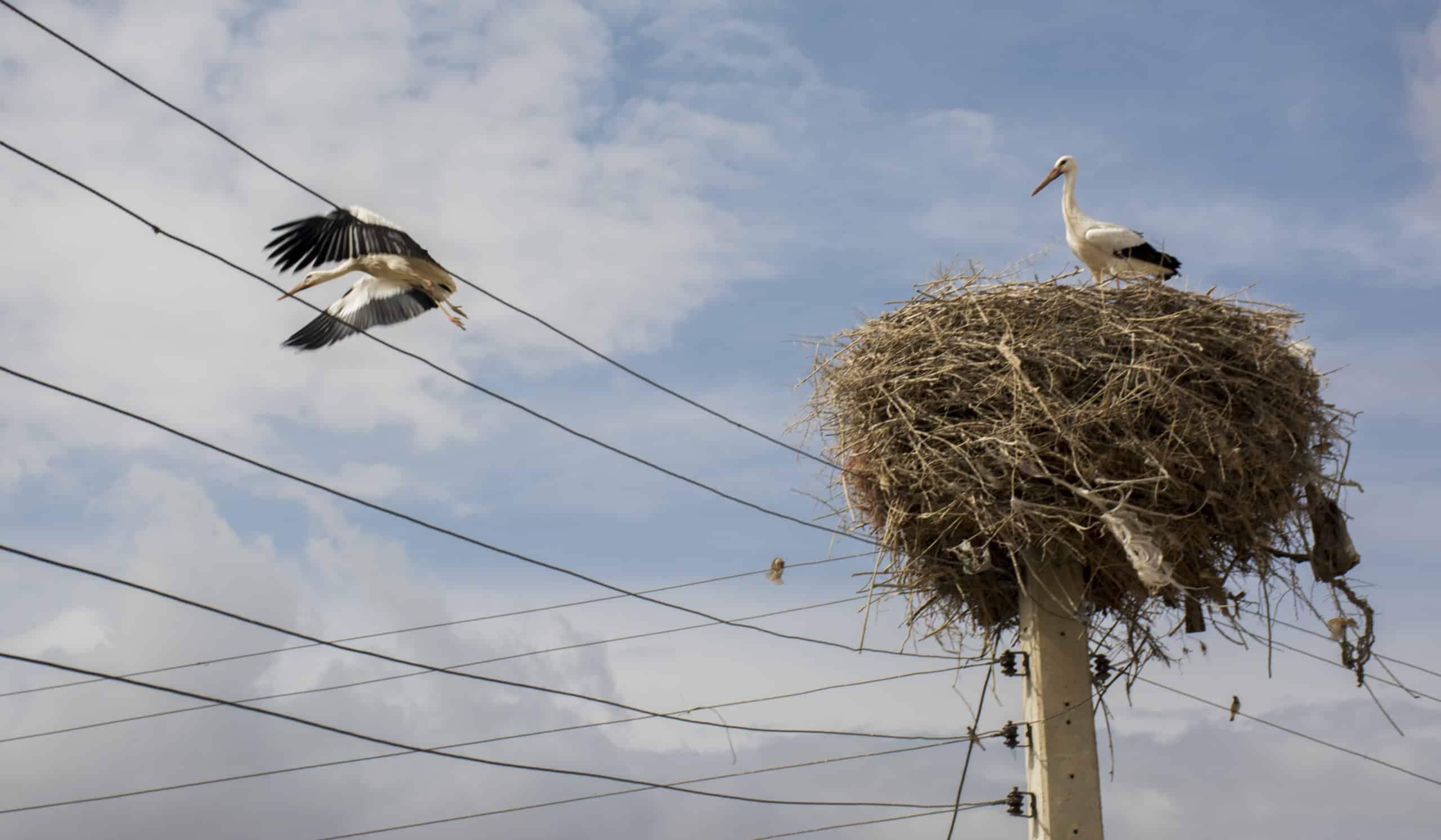
Credit: Iran's Birds and Power Lines Committee
But other large birds with big nests the researchers recorded on power lines included white storks (Ciconia Ciconia), pictured above, and common kestrels (Falco tinnunculus), which sometimes take over the nests of birds like rooks (Corvus frugilegus) or hooded crows (Corvus cornix).
In previous work, Kolnegari and his colleagues found that artificial nest boxes may attract kestrels. They built these boxes on electric poles away from the dangerous zone where the nest might connect two conductors
When they placed these boxes on poles that had previous hosted Eurasian magpie nests, Kolnegari and his colleagues found that the magpies tended to abandon their nests.
Enlarge
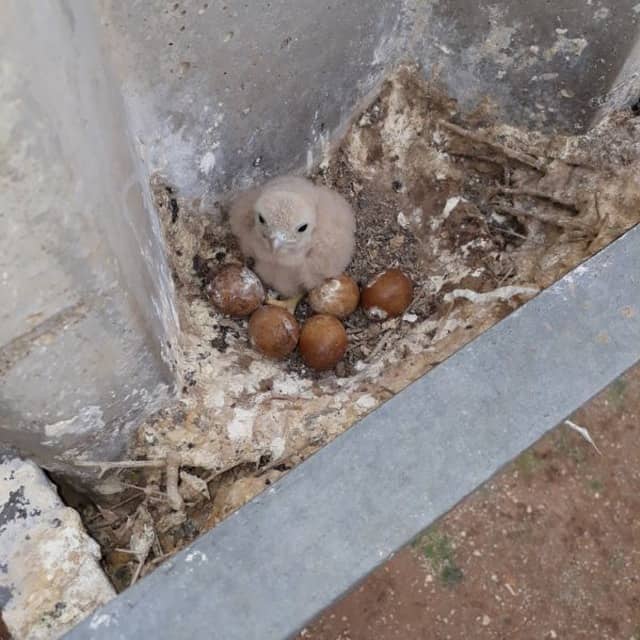
Credit: Iran's Birds and Power Lines Committee
Magpies are a little bigger than kestrels and sometimes prey on the latter’s chicks, pictured above. As a result, kestrels are particularly ornery when defending the areas around their nests, Dwyer said—they often chase the magpies away. Kestrels are usually too small to touch two conductors on the poles at the same time, and the nest boxes are placed and built in such a way that they pose little danger for electrocution.
Kolnegari said that not only can nest boxes for kestrels help stop other birds from nesting on electric poles, but electric poles can provide a way for wildlife managers to meet conservation goals. Climate change has resulted in prolonged drought in some regions of Iran, leading to the decline in trees that have hollows that provide species like kestrels a perfect place to nest. “Breeding bird species have lost the opportunity to reproduce,” Kolnegari said. But electric poles retrofitted with nest boxes may provide an opportunity to retain kestrels on some landscapes.
Enlarge
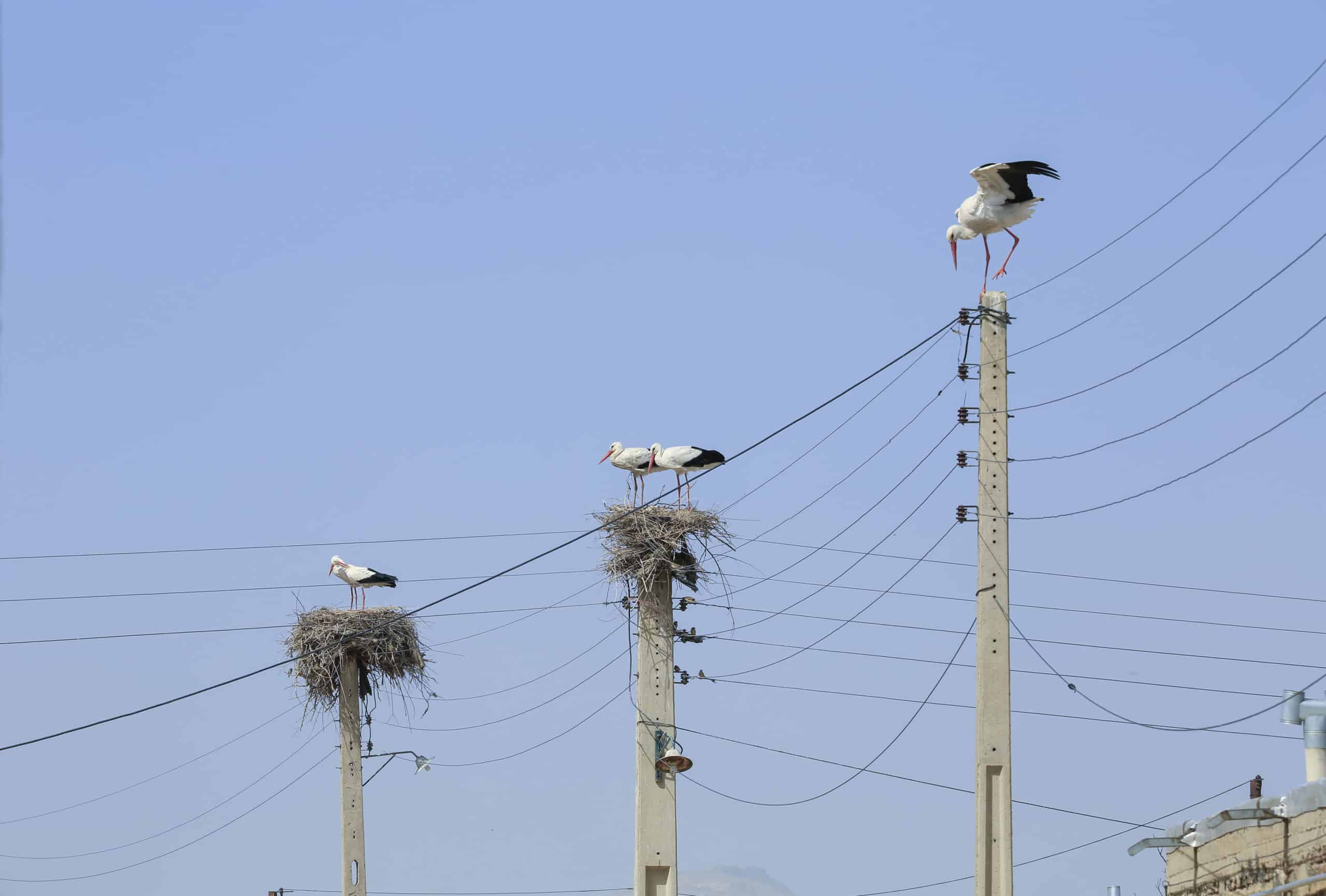
Credit: Iran's Birds and Power Lines Committee
This article features research that was published in a TWS peer-reviewed journal. Individual online access to all TWS journal articles is a benefit of membership. Join TWS now to read the latest in wildlife research.
Header Image: A common kestrel sits on a power line in Iran. Credit: Iran's Birds and Power Lines Committee



